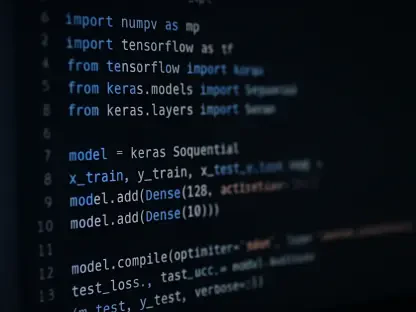Imagine a scenario where a development team, eager to build a new feature, inputs a simple prompt into an AI coding agent and receives a massive block of code in return. At first glance, it seems perfect, but upon closer inspection, the code fails to compile, misses critical requirements, or simply doesn’t align with the intended outcome. This frustrating cycle of trial and error is all too common in AI-assisted coding today. The challenge lies not in the capabilities of AI tools but in how developers interact with them. This guide aims to transform that interaction by introducing a structured, reliable approach to AI coding through spec-driven development using the Spec Kit toolkit.
The purpose of this guide is to equip developers with a methodical framework to harness the full potential of AI coding agents for mission-critical projects. By focusing on specifications as living, actionable artifacts rather than static documents, this approach ensures clarity, alignment, and consistency in software development. The importance of such a structure cannot be overstated in an era where AI can generate code at unprecedented speeds but often lacks the context to deliver precise results without guidance. Through detailed steps and practical insights, this guide will help developers achieve reliable outputs and reduce the frustration of inconsistent AI-generated code.
This toolkit offers a clear path to integrate AI coding agents like GitHub Copilot, Claude Code, and Gemini CLI into a disciplined workflow. Developers will learn how to craft detailed specifications, build technical plans, break down tasks, and implement solutions with precision. Each phase of the process is designed to address specific challenges in AI-driven development, ensuring that intent is captured accurately and translated into functional code. By following this guide, the gap between human intent and AI execution can be bridged effectively, paving the way for more dependable software creation.
Unlocking Reliable AI Coding with Spec-Driven Development
The rise of AI coding agents has revolutionized software development, enabling rapid prototyping and code generation at a scale previously unimaginable. Tools such as GitHub Copilot and Claude Code can produce complex code snippets in seconds based on minimal input. However, this speed often comes at a cost: the phenomenon of “vibe-coding,” where the output appears promising but fails to meet the intended purpose or even compile correctly. This inconsistency poses a significant hurdle for developers working on serious applications where precision is paramount.
For mission-critical projects, the stakes are higher, and the margin for error is slim, making it essential to ensure precision and efficiency at every step. The frustration of sifting through lines of code that miss the mark or require extensive rework can derail timelines and impact quality. AI agents excel at recognizing patterns, yet they struggle without clear, structured instructions to guide their outputs. This gap between potential and performance highlights the urgent need for a disciplined approach to leverage AI effectively in professional environments.
Spec-driven development emerges as a transformative solution to these challenges, and the Spec Kit toolkit provides the necessary structure to make it accessible. By centering the development process around detailed, evolving specifications, this methodology ensures that AI outputs align with project goals from the outset. Developers can move beyond guesswork and iterative fixes, adopting a framework that turns vague prompts into actionable, reliable results, ultimately enhancing productivity and project success.
Why Spec-Driven Development Matters in the AI Era
AI coding agents like GitHub Copilot, Claude Code, and Gemini CLI represent a significant leap forward in development efficiency, with their remarkable ability to interpret prompts and generate code based on extensive training data. Their strength lies in pattern recognition, which enables them to suggest solutions drawn from countless examples. However, this strength is also a limitation when instructions are ambiguous, often resulting in outputs that are technically sound but misaligned with specific project needs or architectural constraints.
Historically, specifications in software development have been treated as static documents, often written once and rarely revisited. This outdated approach fails to meet the dynamic demands of AI-assisted workflows, where adaptability and clarity are essential. Rethinking specifications as living, executable artifacts offers a way to maintain alignment between human intent and AI execution, ensuring that every step of the process is grounded in a shared understanding of project goals.
The importance of this shift cannot be understated, especially as project complexity grows in modern development environments. Specifications serve as a central source of truth, providing a reference point when discrepancies arise or when tasks become unwieldy. By integrating spec-driven development into AI workflows, developers can manage complexity, reduce errors, and foster collaboration across teams, ultimately delivering software that meets both technical and user requirements with greater consistency.
Mastering the Spec-Driven Process with Spec Kit
Spec-driven development offers a structured, four-phase process that transforms how developers interact with AI coding agents, ensuring precision and reliability. The Spec Kit toolkit facilitates this methodology by providing clear tools and commands to guide each stage of the journey. By following these phases, developers can turn ambiguous ideas into concrete, actionable outcomes with the support of AI.
Each phase serves a distinct purpose, with built-in checkpoints to validate progress before moving forward. This disciplined approach minimizes the risk of misaligned outputs and ensures that AI agents operate within well-defined boundaries. Below, the process is broken down into actionable steps, detailing how Spec Kit integrates with AI tools to deliver consistent results for projects of varying complexity.
The ultimate goal of this framework is to empower developers to steer AI agents effectively, focusing on high-level intent while the toolkit and AI handle the granular details. From crafting user-focused specifications to implementing precise code, each step builds on the last, creating a cohesive workflow. This section provides a comprehensive guide to mastering spec-driven development with Spec Kit.
Phase 1: Crafting the Specification
The first phase, known as “Specify,” involves laying the foundation for the entire project by defining high-level goals and user-focused descriptions. Developers input broad objectives and desired outcomes, allowing the AI coding agent to generate a detailed specification. This stage prioritizes the user experience over technical details, ensuring that the project’s purpose and target audience are clearly articulated from the beginning.
This specification acts as a blueprint, capturing the essence of what the software aims to achieve and for whom. By focusing on user journeys and success metrics, developers can ensure that the AI understands the broader context before diving into implementation. This clarity sets the tone for subsequent phases, reducing the likelihood of misinterpretation by the AI agent.
Defining User Needs
A critical aspect of the Specify phase is honing in on user needs, addressing the “what” and “why” of the project rather than the “how.” This means identifying who will use the product, what challenges they face, and what outcomes they expect. For instance, a focus on solving a specific pain point for end-users helps anchor the specification in real-world value rather than abstract technical goals.
This user-centric approach ensures that the specification reflects the true intent of the project, providing a foundation that resonates with stakeholders and developers alike. By avoiding premature technical discussions, the process maintains its focus on delivering meaningful results. This step is essential for aligning the AI’s output with the project’s overarching vision.
Keeping Specs Alive
Specifications must be treated as dynamic documents that evolve alongside the project, adapting to new user feedback and insights. Unlike traditional specs that gather dust once written, a living specification remains relevant by incorporating changes as they arise. This adaptability ensures that the project stays aligned with shifting priorities or requirements.
Maintaining an up-to-date specification also fosters collaboration, as team members can refer to a single, current source of truth. Regular updates during development cycles prevent misunderstandings and keep the AI agent informed of the latest goals. This ongoing refinement is a cornerstone of spec-driven development, ensuring relevance at every stage.
Phase 2: Building the Technical Plan
The second phase, termed “Plan,” shifts the focus to technical details, where developers provide the AI with specifics about the desired technology stack, architectural constraints, and compliance requirements. The coding agent then generates a comprehensive technical roadmap based on these inputs. This step bridges the gap between high-level intent and practical implementation strategies.
This roadmap serves as a guide for how the project will be executed, detailing the tools, frameworks, and standards to be used. By clarifying these elements early, developers can avoid downstream issues related to mismatched technologies or unmet regulations. The Plan phase ensures that the AI operates within defined boundaries, producing outputs that are both feasible and aligned with organizational norms.
Incorporating Constraints
Embedding company standards, legacy system integrations, and performance targets into the technical plan is vital for ensuring compatibility and efficiency. For instance, specifying the use of certain libraries or adherence to security protocols helps tailor the AI’s output to fit existing ecosystems. This step prevents the agent from suggesting solutions that are impractical or non-compliant with established guidelines.
Constraints also include considerations like scalability needs or integration with third-party systems, which must be accounted for upfront. By providing the AI with this context, developers can ensure that the resulting plan is not only technically sound but also strategically aligned with long-term goals. This attention to detail minimizes rework and enhances project coherence.
Exploring Plan Variations
Developers are encouraged to request multiple plan variations from the AI coding agent to evaluate different approaches. Comparing these options allows for a deeper understanding of trade-offs, such as performance versus cost or simplicity versus robustness. This exploration helps in selecting the most suitable path forward for the project’s unique needs.
Having alternative plans also fosters flexibility, enabling teams to pivot if initial assumptions prove incorrect, and the ability to assess various technical roadmaps ensures that the chosen strategy is well-informed and optimized. This step underscores the value of leveraging AI to think through diverse possibilities before committing to a single course of action.
Phase 3: Breaking Down Tasks
In the third phase, labeled “Tasks,” the AI coding agent converts the specification and technical plan into small, testable work units. These tasks are designed to be manageable and isolated, allowing for focused implementation and validation. This breakdown is crucial for maintaining momentum and ensuring that progress can be tracked effectively.
Each task represents a specific piece of the larger puzzle, making it easier to assign, execute, and review. This granularity reduces the overwhelm often associated with large-scale projects, as developers can tackle one component at a time. The Tasks phase sets the stage for precise implementation by providing clear, actionable directives to the AI.
Creating Focused Work Units
Tasks should be narrowly defined to enhance clarity, such as “create a user registration endpoint with email validation,” rather than broad objectives like “build authentication.” This specificity ensures that the AI focuses on discrete, achievable goals, minimizing the risk of scope creep or misaligned outputs. Focused work units also facilitate easier testing and debugging.
By structuring tasks in this manner, developers can maintain control over the project’s direction, ensuring each piece contributes to the whole. This approach aligns with best practices in project management, where breaking down work into smaller increments boosts efficiency. The result is a streamlined process where AI outputs are both targeted and effective.
Ensuring AI Stays on Track
The task breakdown mirrors the principles of test-driven development, enabling the AI to self-validate its work by adhering to predefined criteria. This method helps keep the agent aligned with the specification and plan, reducing errors and deviations. Regular validation at the task level ensures that issues are caught early, before they escalate.
This structured approach also allows developers to monitor AI performance closely, intervening when necessary to correct course. By providing clear boundaries for each task, the process minimizes the guesswork that often plagues AI-generated code. Keeping the AI on track in this way enhances overall reliability and project quality.
Phase 4: Implementing with Precision
The final phase, “Implement,” involves the AI coding agent executing the defined tasks with clarity derived from the prior phases. This stage focuses on producing code that directly addresses specific requirements, guided by the detailed specification, technical plan, and task breakdown. Precision in implementation is the hallmark of this phase, ensuring that outputs meet expectations.
Developers play a critical role in this phase, reviewing focused code changes rather than sifting through extensive, unwieldy outputs. The AI’s work is informed by the structured inputs from earlier steps, resulting in code that is purposeful and relevant. This targeted approach reduces the cognitive load on developers, allowing for more effective oversight.
Streamlining Code Reviews
Smaller, purpose-driven code outputs significantly ease the review process, as developers can focus on specific changes tied to individual tasks. This contrasts with the challenge of evaluating large, monolithic code dumps, which can obscure critical issues. Streamlined reviews enable faster feedback loops, accelerating the development cycle.
Purposeful code snippets make it easier to identify discrepancies or errors, as each piece has a clear objective, and this clarity enhances the quality of feedback provided to the AI, ensuring continuous improvement in subsequent outputs. Efficient code reviews are a direct benefit of the spec-driven process, saving time and effort.
Reflecting and Refining at Checkpoints
Built-in checkpoints at each phase allow developers to critique AI outputs, address gaps, and refine artifacts before proceeding. These reflection points are essential for maintaining alignment with project goals, as they provide opportunities to reassess and adjust. Regular pauses for evaluation prevent small issues from becoming major setbacks.
During these checkpoints, developers can refine the specification, update the plan, or adjust tasks based on emerging insights. This iterative process ensures that the project remains adaptable to change while staying true to its core intent. Reflection and refinement at each stage are key to achieving a polished, reliable final product.
Installing and Using Spec Kit in Your Workflow
Integrating Spec Kit into an AI coding workflow is a straightforward process that enhances the interaction with tools like GitHub Copilot, Claude Code, and Gemini CLI. This section outlines the practical steps to set up and utilize the toolkit effectively. By following these instructions, developers can quickly adopt a spec-driven approach to their projects.
The installation and usage of Spec Kit rely on simple commands that guide the AI through the four-phase process detailed earlier, ensuring that each stage of development is executed with precision from initialization to implementation. Below is a concise guide to getting started with Spec Kit.
Install Spec Kit: Begin by initializing a project with the command
uvx --from git+https://github.com/github/spec-kit.git specify init. This sets up the necessary structure for spec-driven development and prepares the environment for the subsequent steps, ensuring that everything is in place for a smooth workflow in your project setup.Generate Specification: Use the
/specifycommand to input high-level prompts focused on project goals and user needs. The AI will generate a detailed spec based on this input, capturing the “what” and “why” of the project.Create Technical Plan: Proceed with the
/plancommand to define the architecture, technology stack, and constraints. This step results in a comprehensive roadmap that guides the AI in aligning with technical requirements.Define Tasks: Utilize the
/taskscommand to break down the specification and plan into actionable work units. These focused tasks provide clear instructions for the AI to follow during implementation.Iterate and Verify: Continuously review and refine outputs at each phase using the built-in checkpoints. This iterative process ensures accuracy and alignment with project intent, allowing for adjustments as needed.
Real-World Applications and Future Potential
Spec-driven development with Spec Kit shines in various real-world scenarios, addressing unique challenges across different project types. In greenfield projects, where everything starts from scratch, a well-crafted specification and plan ensure that the AI builds a solution tailored to specific intent rather than generic patterns. This upfront clarity prevents wasted effort on misaligned prototypes.
For feature additions to existing systems, this approach proves particularly powerful by enforcing clarity on how new components integrate with established codebases. The specification defines the feature’s purpose, while the plan ensures architectural compatibility, resulting in seamless additions. This method reduces the risk of introducing inconsistencies or technical debt into mature projects.
Legacy modernization also benefits immensely, as spec-driven development helps recapture lost business logic in outdated systems. By creating a modern specification and a fresh technical plan, developers can guide the AI to rebuild systems without inheriting past inefficiencies. Looking ahead, trends suggest specifications will increasingly become executable sources of truth, with Spec Kit evolving to include enhancements like VS Code integrations and advanced context engineering for even greater workflow efficiency.
Embrace Spec-Driven Development Today
Reflecting on the journey through spec-driven development, the structured four-phase process provided by Spec Kit proved to be a game-changer in harnessing AI for reliable coding. Each step, from crafting detailed specifications to implementing precise solutions, was designed to bridge the gap between human intent and AI execution. Developers who followed this guide likely experienced a marked improvement in project clarity and output consistency.
Beyond the immediate benefits, the adoption of this methodology laid a foundation for more disciplined and intent-driven software creation. As a next step, exploring how to scale this approach within larger teams or across multiple projects could unlock further efficiencies. Experimenting with Spec Kit’s integration into daily workflows offered a practical way to refine skills in managing AI tools effectively.
Looking toward future considerations, staying attuned to updates in Spec Kit and emerging AI capabilities promises to enhance this process even further. Developers who embrace this shift position themselves at the forefront of a transformative era in coding, where specifications become not just documents, but dynamic tools for innovation. Taking these insights forward opens new avenues for creating software that truly meets user needs with precision and reliability.









